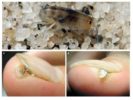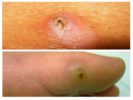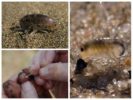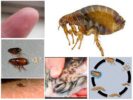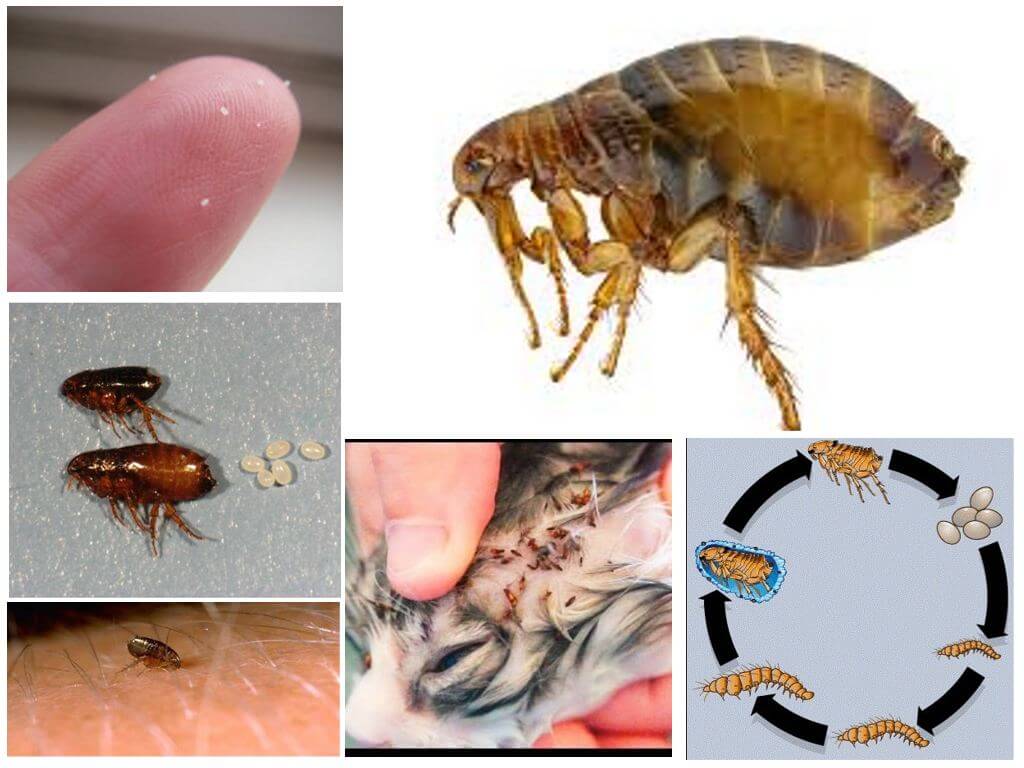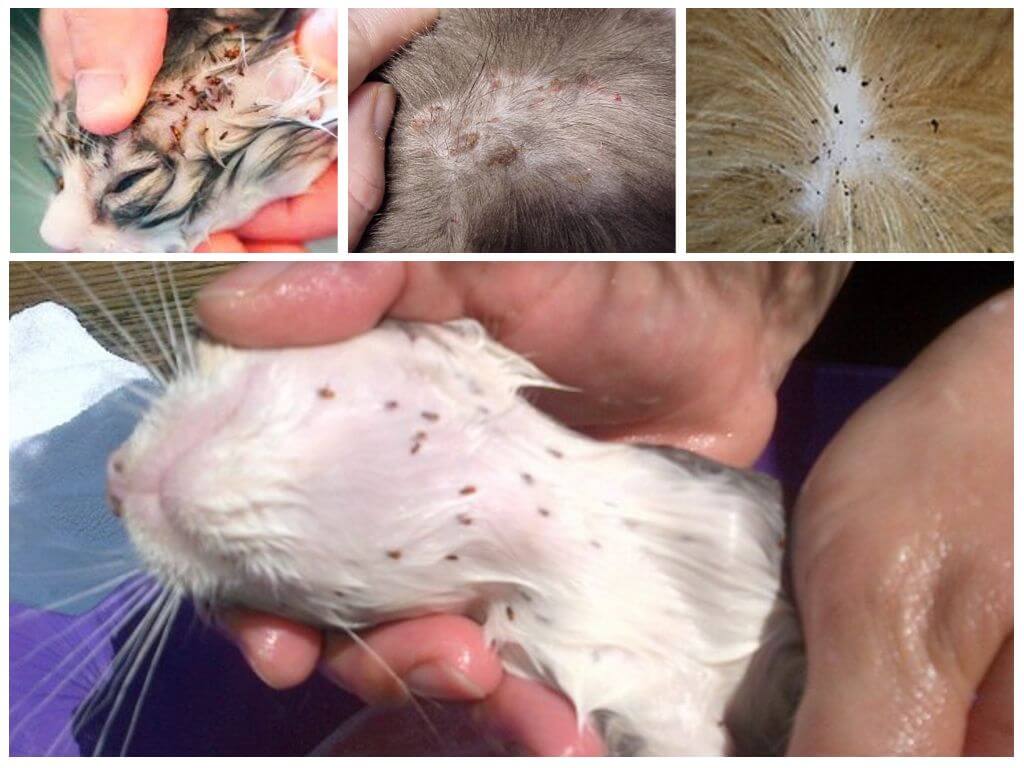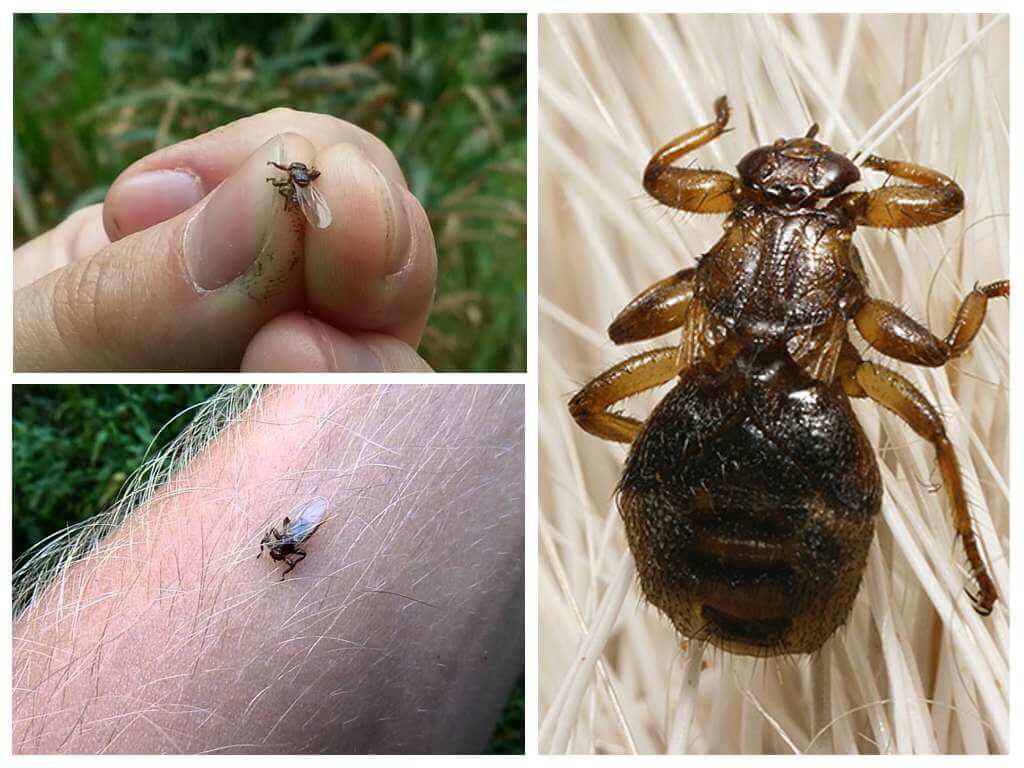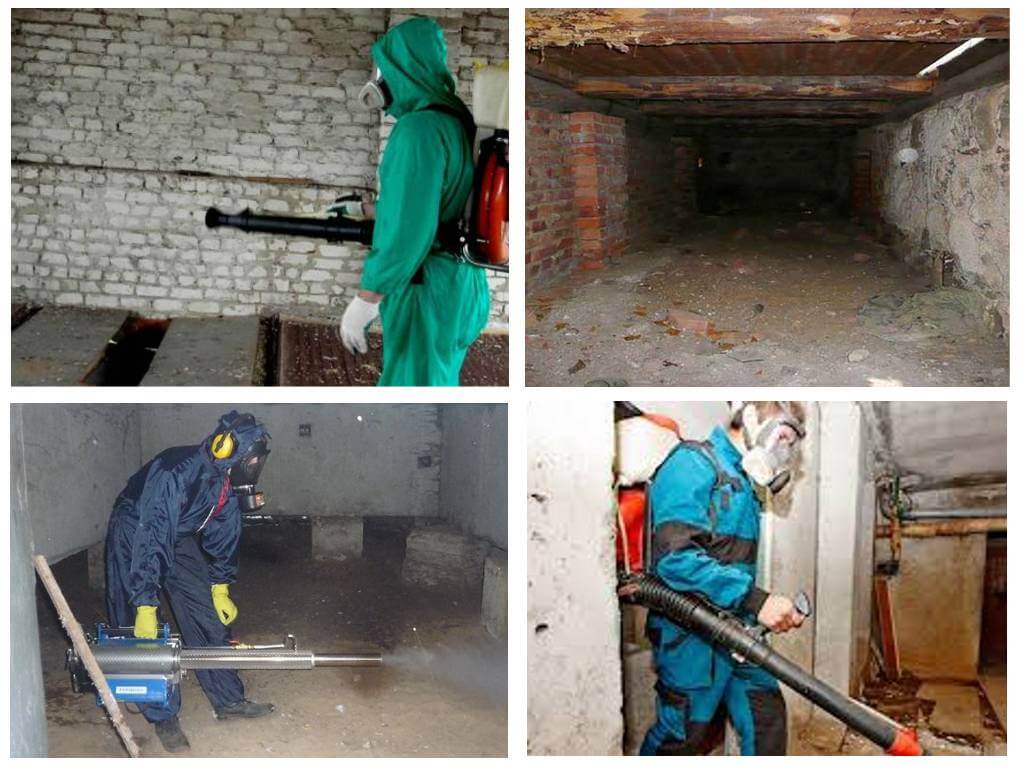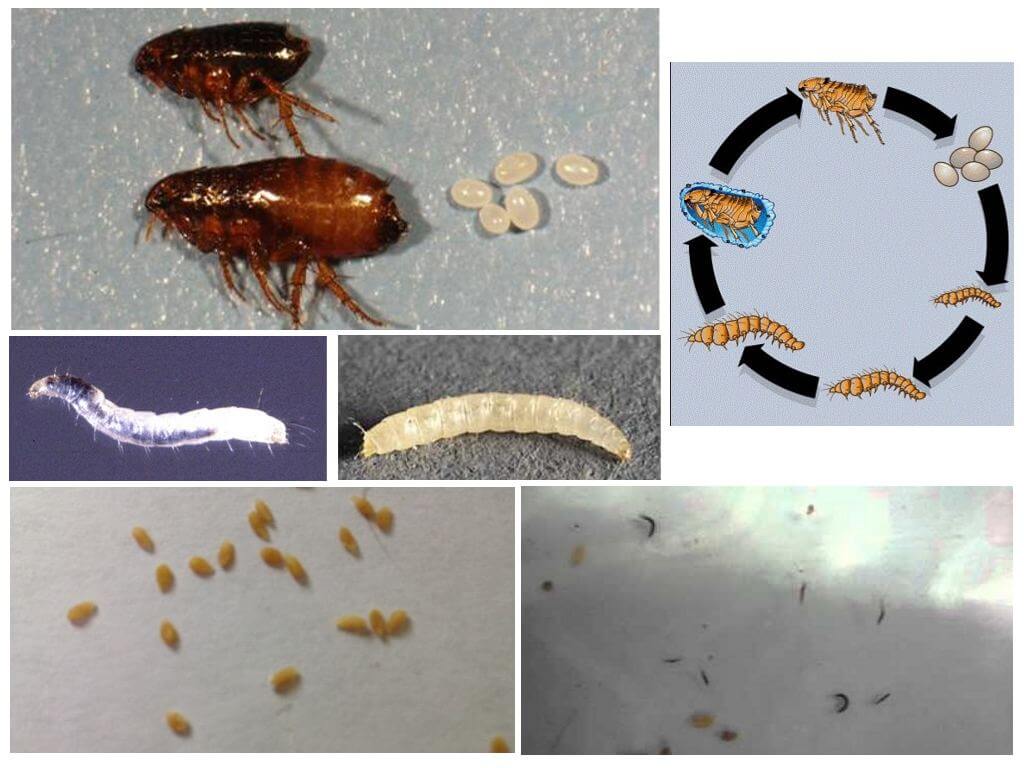- Sand flea
- Sand Flea Bites
- Sand Flea Bites
- Sand flea
- Fleas
In recent years, many seek to go to rest in the warm southern countries to lie on a sand, swim and see local attractions. But here they can expect an unpleasant surprise, because various insects are found in the sand. Sand fleas in the photo look harmless, but they can give vacationers not quite “pleasant” sensations and ruin the impressions of the rest.
Who are the sand fleas
Sand flea - a very small insect parasite, a distant relative of ordinary Russians cat fleas. The length of the body is not more than 1-2 mm. The insect can’t fly, but jumping great: One jump is possible at a distance of up to 35 cm.
The appearance of a flea is a shiny and solid brown body, it is impossible to crush such a finger (see photo).
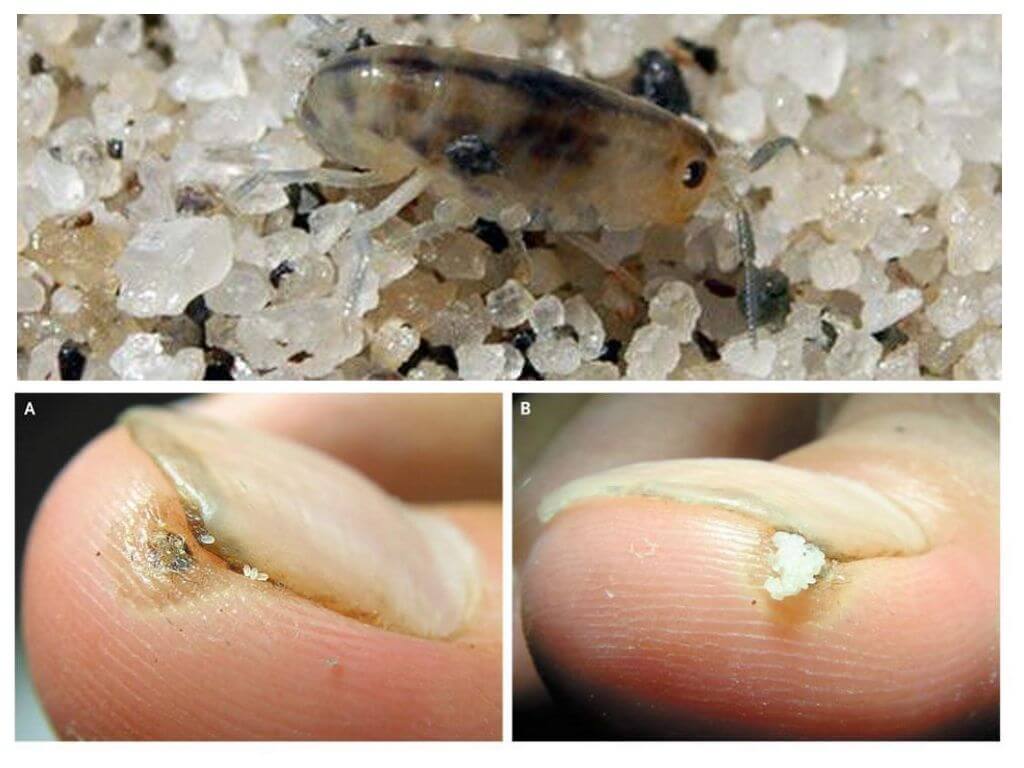
Habitat
Sand fleas (see photo) usually live in southern tropical countries. Most common places:
- Islands of Central America (Cuba, Jamaica);
- On the African continent (Trinidad, Dominican Republic, etc.);
- Southeast Asia (Thailand, Vietnam, India).
Sand fleas in Vietnam are most common in rural areas and the homes of the poor in cities. They live in such places everywhere: on the ground and in the grass, on the floor, in sheds for animals, among trees and on the beach. Their victims are animals and people, including tourists.
Beach fleas in Vietnam are found mainly on uncivilized beaches, because in private and tourist establishments, the owners, knowing about such a problem, get rid of parasites in the sand by sifting it.
Flea bites and their consequences
The bites of sand fleas-males (most often on the legs or arms) can cause the only nuisance - negative sensations due to constant itching and combing. To get rid of these symptoms, it is better to use ointments.
But the meeting of a vacationer with a female may end in more unpleasant consequences.
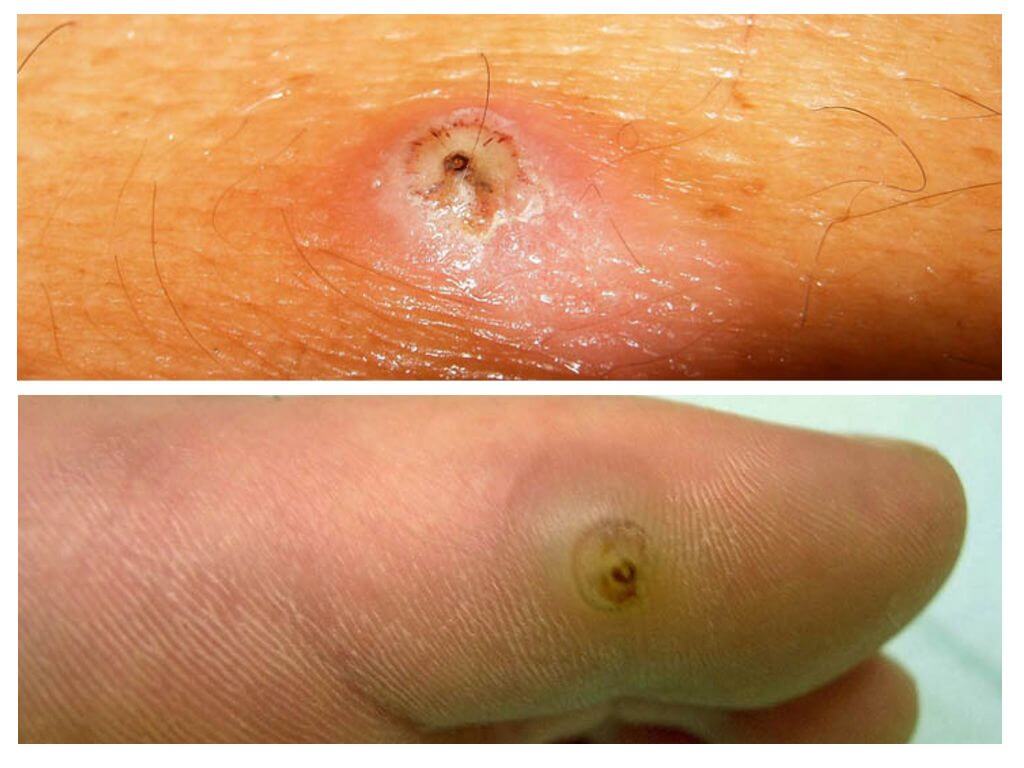
Interesting!
For a female flea, any warm-blooded animal, including and man is an opportunity to grow his offspring in very favorable conditions and to feed him well.
A fertilized female bites through the skin and attaches to a blood vessel in the upper layer of the human epidermis. Then she begins to feed on blood and raise her children. Sand fleas under the skin hatch eggs, increasing in size over several days by tens of times.
After the eggs mature, the female lays them, firing from the nest, and then most often dies. When the larvae hatch, they fall on the ground or sand, where they mature within 20 days, gradually turning into an adult sand flea.
Tungias
A female sand flea is capable of causing a disease called tungia, which tourists have recently been exposed to while visiting tropical countries.
During the stay of the female in the human body in the subcutaneous layer (3-12 days), the tissues located around begin to become inflamed, and suppuration occurs. A person begins to experience severe pain, a swelling forms in the female's place of residence, in the center of which is a black abscess or white abscess (as seen in the photo). To get rid of it, you have to turn to specialists.
The treatment process and possible complications
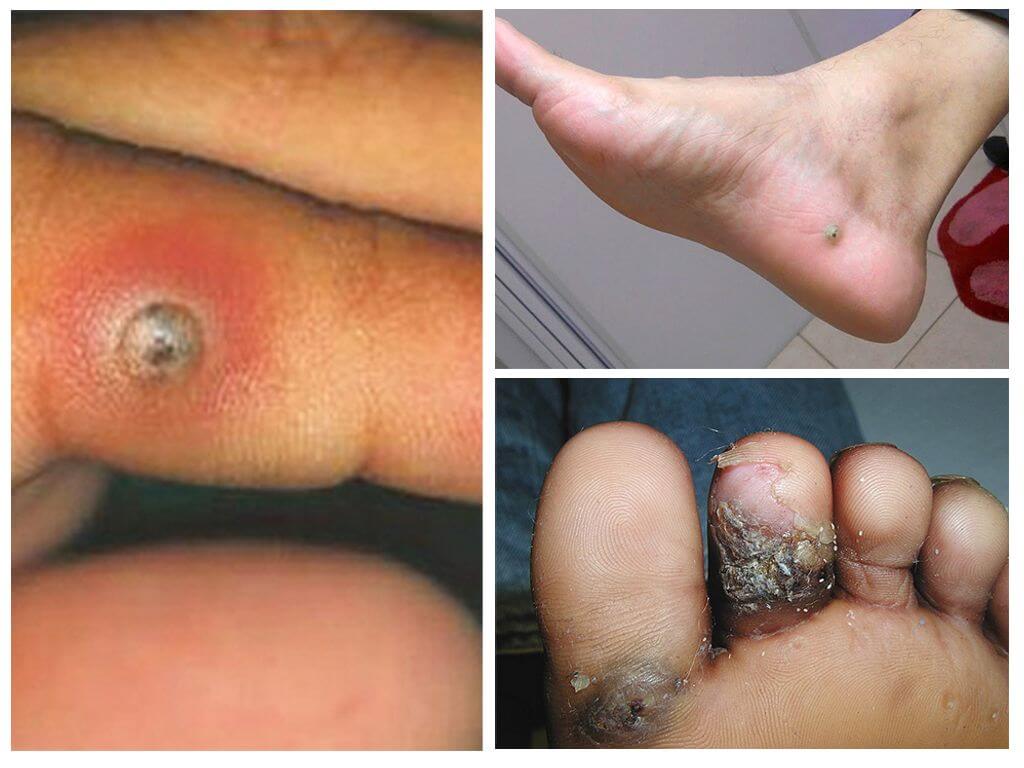
How to be treated after a bite of sand fleas:
- The first step is to see a doctor for help;
- If only itching in bitten areas is concerned, then ointments or creams for itching are usually used (Yellow Balm cream is very popular in Vietnam for this purpose);
- If an allergic reaction occurs (fever and severe rash), antihistamines are prescribed, and Fenistil-gel also relieves itching;
- If inflammation is detected at the place of stay of the female flea, then the only method of treatment is to open the abscess surgically, remove the female, and disinfect the wound and apply a bandage;
- It is not recommended to independently treat an abscess, removing a female with a needle or knife, because the flea attaches to a blood vessel, and particles of the extracted parasite can enter the blood;
- The inflammation that occurs when an infection gets into the wound often causes suppuration, which in the future can have sad consequences, so the doctor must prescribe a course of antibiotics.
Complications and consequences that are possible with improper treatment of tungiosis:
- Deformation of the fingers (if the abscess is located on the fingers) and even amputation;
- Thrombophlebitis or elephantiasis;
- Pneumonia (pneumonia);
- Tissue necrosis in place bite.
Safety regulations

To reduce the risk of communication with sand fleas, the following rules must be observed:
- Before traveling to southern countries, buy a protective product against sand fleas - a special repellent that protects against bites.
- Always wear shoes with socks;
- To move along the beach only in flip flops or slippers;
- Do not sit directly on the sand;
- If on the beach there is a suspicion that sand fleas are present, then transfer to a more sunny place, because parasites like shaded places more, also they are not in water;
- Wash legs and inspect every night;
- If you suspect a bite or penetration of a sand flea, consult a doctor.
Important!
The main rule for tourists vacationing in warm countries is not to swim and sunbathe on remote, unvisited by people, beaches, not to walk on thickets of tall grass, etc ... otherwise sand fleas and other harmful insects will find you.
Not only fleas
Tourists coming to Vietnam and Thailand often confuse the bites of sand fleas and other insects, especially since it is not always possible to see the culprit of the bite. Therefore, information about the existence of other similar insects, whose bites are visually indistinguishable from flea "injections", will be useful for them:
- Cats and mosquitoes - fly very quickly and leave similar bites;
- Ants - they can bite a person if they accidentally crawl into clothes or are crushed by hand;
- Ticks - they suck in and drink blood for a rather long time, but if they are not noticed on time, they leave bumps in the place of the bite, which cause painful discomfort;
- Bed bugs - are present only in the cheapest hotels, leaving bite marks on the body (bumps are usually absent).
Can they live in an apartment
It is found in various regions of Russia many types of fleasthat can get into the room, despite even the absence of pets. The most common types are:
- Home fleasthat animals carry to the apartment can bite people as well;
- Basement (bugs up to 0.5 cm in size) penetrating from the basement or entrance into the living quarters on the lower floors;
- Bedding (white) living right in the beds;
- Sand fleas in the apartment are very rare and only on the Crimean peninsula, but there they are not as dangerous as their overseas brothers.
Recommendations for tourists going to sunbathe in the southern countries: take creams and ointments from harmful insects and more with you. Have a nice rest!
Reviews
I was bitten by fleas on a beach in Vietnam, and on the last day, when I went in the morning for a walk along the seashore (say goodbye).It was still not very hot, a fresh breeze was blowing, light waves in the sea. She returned - and began to itch, it became especially bad already at home after returning. It was scratched so that I didn’t know which wall to climb on, and one wound was festering, a blood tree and pus flowed out of it. I had to drink anti-allergic tablets and smear with ointment. The doctor then made an incision and cleaned the wound. In general, everything healed for almost 3 months. This is called - rested.
Anya, Moscow
We went to Thailand on vacation with the whole family with a child. Husband and child - everything is fine, but they bit me, then itched for a long time. I went to a local pharmacy and bought special scaring ointments, then I smeared them every time in the morning and after bathing. It seems to help - do not bite. Those who rested with us said that not all fleas selectively bite, so I was not lucky.
Elena, Belgorod
